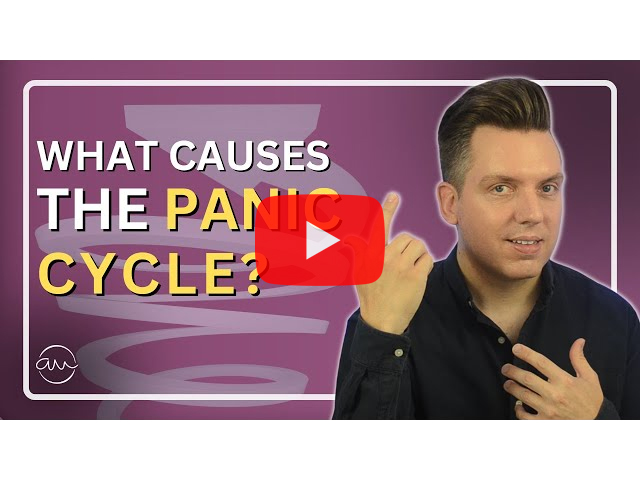How to Help Someone Having a Panic Attack: A Guide to Supportive Assistance
Witnessing someone you care about experiencing a panic attack can be distressing and overwhelming. In such moments, providing calm and compassionate support can make a significant difference in helping them navigate this frightening experience. So, in this article, we’ll explore the simplest and most effective way to support someone.
Recognising the signs of a panic attack:
Before delving into strategies for supporting someone during a panic attack, it's crucial to recognise the signs and symptoms of a panic attack which can be physical, cognitive, behavioural, and emotional cues which indicate heightened anxiety and distress.
Panic attack symptoms can vary and attacks can occur suddenly, but here are some of the common signs to be aware of:
- Intense fear or anxiety
- Rapid heartbeat
- Shortness of breath or hyperventilation
- Sweating
- Trembling or shaking
- Feeling of impending doom
- Dizziness or light-headedness
- Chest pain or discomfort
- Nausea or stomach upset
- Tingling sensations
How can you help someone who is having a panic attack?
Helping someone who is experiencing a panic attack requires calm support and reassurance. When you are calm, it helps them feel safter and prevents further escalation and stops additional worry for the person involved. It can ben helpful to guide them through calming techniques which engage the body’s own natural relaxation response. Here are some useful steps to follow:
- Stay Calm: Remain composed yourself. Your calm demeanour can help reassure the person experiencing the panic attack.
- Acknowledge Their Feelings: Validate their experience by acknowledging their feelings of fear and discomfort. Let them know that what they are feeling is real and that they are not alone.
- Encourage Deep Breathing: Guide them to practice deep breathing exercises. Encourage slow, deep breaths in through the nose and out through the mouth. This can help regulate their breathing and activate the body's relaxation response.
- Use Grounding Techniques: Help them focus on their surroundings by using grounding techniques. Encourage them to name objects they can see or describe the sensations they feel, such as the texture of their clothing or the temperature of the air.
- Offer Physical Comfort: Provide gentle physical gestures of comfort, such as a reassuring touch on the shoulder or holding their hand if they are comfortable with it. Physical contact can help convey support and safety.
- Guide Relaxation Exercises: If appropriate, guide them through relaxation exercises such as progressive muscle relaxation or visualization techniques. These can help alleviate tension and promote a sense of calm.
- Avoid Judgment: Refrain from judgmental statements or minimizing their experience. Instead, offer empathy and understanding.
- Reassure Them: Remind them that panic attacks are temporary and will pass. Offer reassurance that they are safe and that you are there to support them.
- Follow Up: After the panic attack subsides, check in with them to see how they are feeling and offer ongoing support if needed. Encourage them to prioritise self-care and seek professional help if necessary.
How are panic attacks triggered?
There is often a triggering event which increases your anxiety and it’s the way you perceive and respond to the increase in your bodily symptoms which may lead to a panic attack. To explain this, here is an example of the steps which lead to panic attacks:
1. The Trigger
Something triggers an anxiety response - and this can be an internal triggers, such as increased pressure, stress and worry about something specific or ongoing issues causing stress OR external triggers such as entering a crowded train in busy rush hour. You might notice you heart beating faster, or your chest tighten.
2. Slight increase in unpleasant bodily symptoms
Your brain releases a little adrenaline and activates your fight or flight response. You begin to feel anxious emotionally and physically you begin to notice symptoms like heart palpitations, shortness of breath, dizziness or sweating for example.
3. Internalisation
You begin to think about how awful this feels you worry about it, you might even worry that something really bad will happen. You begin to question what’s wrong, what will happen next and these symptoms are misinterpreted as something more serious - making your bodily symptoms even more noticeable and magnified.
4. Catastrophic Interpretation
As you continue to worry you catastrophize more and more and as you do your brain releases more adrenaline leading to more physical symptoms of anxiety, really ramping up your fight and flight response. You’re now telling yourself; I’ll have a heart attacks, I’ll suffocate, I’ll go completely out of control, I need to escape. Every ounce of mental energy you have is now focused on trying understand what’s wrong and trying to make it go away and your brain reacts to these catastrophic thoughts as additional threats, and your fight or flight response is triggered even more forcefully.
5. Panic
This upward spiral leads to a panic state.
Video explainer:
This example shows that the trigger for panic is different than the cause of panic. It’s important, because when you understand this, it makes it easier to intervene at any point to reduce your fight and flight response and therefore your worry about your bodily sensations. Because while it can be internal or external events and situations which trigger your anxiety, it’s the way you think and worrying about your anxiety that causes your panic attack.
How Does Online Hypnotherapy Work for Anxiety and Panic?
Online hypnotherapy offers effective treatment for anxiety-related conditions. In my practice, we use Solution Focused approaches, combining positive talking therapy and coaching with hypnosis to address anxiety and panic. In sessions, we prioritise future-focused discussions, steering clear of past issues. This encourages positive thinking and expression, aiding in overall anxiety reduction. Through understanding brain mechanisms related to your concerns, we empower you to interrupt the anxiety and panic cycle, bringing greater control and well-being. This process equips you to manage physical symptoms and confront triggers safely, reshaping underlying beliefs and fostering positive behavioural patterns to aid recovery.
Hypnosis plays a key role in anxiety reduction, using guided relaxation techniques to induce calmness in body and mind. As you engage with your therapist, you'll enter a state of focused attention, guided to imagine beneficial scenarios. Positive suggestions are imparted to prompt subconscious shifts in perspective, facilitating reflection on discussed ideas and solutions to aid in your healing journey.
How Do I Start Online Hypnotherapy for Panic and Anxiety?
If you're considering online hypnotherapy as a solution for your anxiety and panic, feel free to reach out for a complimentary initial chat with Andrew. This conversation offers an opportunity to explore your situation and discuss potential personalised treatment plans, providing insight into how hypnotherapy can support your well-being.







